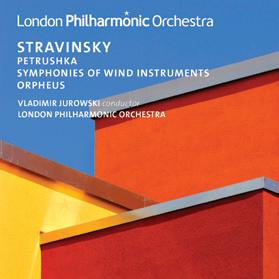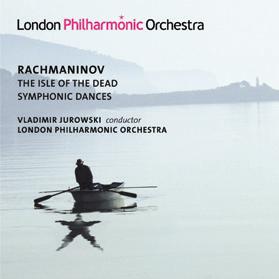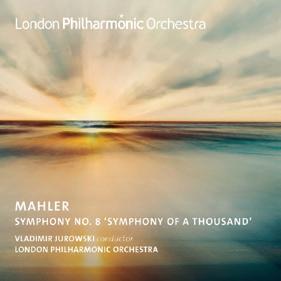
PYOTR ILYICH TCHAIKOVSKY
THE SLEEPING BEAUTY (EXCERPTS), ARR. STRAVINSKY
For most of the 20th century’s leading modernists, Tchaikovsky was an embarrassment. He was the embodiment of luscious, escapist old-world romanticism, the very thing the progressives were striving to get away from. Hard-line revolutionaries like Arnold Schoenberg turned the full force of their scorn on him – and yet he remained so infuriatingly popular! So there was some astonishment when, in the 1920s, Igor Stravinsky, creator of one of music’s most notorious shock-successes with his ballet The Rite of Spring (1913), came out in public as a ‘heartfelt’ admirer of Tchaikovsky’s ‘wonderful talent’. The ultimate fruit of that admiration was to be his ballet The Fairy’s Kiss (1928), but before that, in 1921, Stravinsky orchestrated two numbers from Act II of Tchaikovsky’s The Sleeping Beauty, at the request of the great ballet impresario Serge Diaghilev. Tchaikovsky had cut these two items from the ballet after its premiere in
St Petersburg, and his own orchestrations were lost. Later, in 1941, Stravinsky made a version of the famous Act III ‘Bluebird Pas-de-Deux’ for reduced orchestra for the New York Ballet Theatre – wartime austerity meant that a full orchestral version was just too expensive.
Practical necessity may have prompted Stravinsky to make these arrangements, yet they are equally acts of homage, lovingly recreating Tchaikovsky’s unique soundworld. As Stravinsky later confessed, it was a sound that always took him back to St Petersburg, the beloved city of his childhood, and to Russia itself, from which he was to remain painfully exiled until the last years of his long life.
THE FAIRY'S KISS: BALLET IN FOUR SCENES
SCENE 1: PROLOGUE – THE LULLABY IN THE STORM
SCENE 2: A VILLAGE FÊTE
SCENE 3: AT THE MILL
PAS DE DEUX: ENTRÉE (MODERATO)
ADAGIO
VARIATION (ALLEGRETTO GRAZIOSO) CODA (PRESTO)
SCÈNE: ANDANTE NON TANTO – PIÙ LENTO
SCENE 4: EPILOGUE – LULLABY IN THE LAND OF ETERNITY
Stravinsky loved making provocative statements about music – especially when it came to the subject of emotion in music: ‘Music of itself can express nothing’; ‘Music is far closer to mathematics than to literature’. In performances of his own music he was quick to condemn anything that smacked of ‘interpretation’. Remarks like these have led to a widespread misconception that Stravinsky was a cold or clinical musician. Privately he seems to have seen it differently. ‘Passionate emotion’, he said, could also be expressed within the most ‘limiting conventions’, and he praised the medieval Persian miniaturists who, despite being forbidden to show facial expressions, still managed to convey intense feelings through the positioning of hands or the tilt of a head.
But this advocate of extreme self-discipline also loved the music of his great fellow Russian, Tchaikovsky – surely one of the most passionate and self-revealing of all composers. Tchaikovsky’s ‘Pathétique’ Symphony (No. 6) made a terrific impression on him as a boy, and years later, when he knew he was dying, Stravinsky found he was unable to listen to it on the radio – it stirred him too deeply. When the dancer Ida Rubinstein came to Stravinsky in 1927 with the suggestion that he compose a ballet inspired by the music of Tchaikovsky, Stravinsky did not hesitate. ‘It would’, he said, ‘give me an opportunity of paying my heartfelt homage to Tchaikovsky’s wonderful talent’. Stravinsky made a selection of melodies and motifs from Tchaikovsky’s solo piano pieces and
songs, which he then reworked – sometimes completely transforming their character in the process – as the basis of his ballet score. For the story he turned to Hans Christian Andersen’s fairytale The Ice Maiden, about the Swiss boy, Rudy, who as a baby is claimed by the Ice Fairy with a magic kiss, and later carried off by her forever on the eve of his wedding. The story, said Stravinsky, became an allegory of Tchaikovsky’s own destiny: ‘the Muse having similarly branded Tchaikovsky with her own fatal kiss, whose mysterious imprint made itself felt in all this great artist’s work.’
As to the specific nature of that ‘fatal kiss’, Stravinsky seems to have been reluctant to go further. Whatever the motivation, it is remarkable how lovingly Stravinsky treats many of the Tchaikovsky themes he uses in The Fairy’s Kiss. However brilliant and subtle his reworking, there is little of the ironic distortion one finds in the Pergolesi-based ballet Pulcinella or the Grand Opera parodies of Oedipus Rex. Often Stravinsky finds orchestral colours that sound distinctly Tchaikovskian, though Stravinsky’s own voice, crisp and clear as ever, is also hard to miss. Most surprising is the ardent full-orchestral climax at the end of Scene 3, based on the melody of Tchaikovsky’s famous song ‘None but the lonely heart’. One may feel that Stravinsky comes very close to baring his own heart at this point – little sign of ‘limiting conventions’ here.
The ballet score of The Fairy’s Kiss is laid out in four scenes. In Scene 1 a mother is separated from her child in a mountain storm. The Ice Fairy finds him and kisses him. Later he is rescued by a group of villagers. Scene 2 shows the child now grown to a young man, enjoying the village fête with his fiancée. The Ice Fairy approaches disguised as a gypsy and tells him his fortune, promising him great things. Bridal dances begin Scene 3 as the young man prepares for his wedding, but the Ice Fairy disguises herself as his fiancée and spirits him away to her everlasting dwelling place. There, in Scene 4, she now claims him forever by kissing him on the sole of his foot. The music at the close is hushed and restrained, but –despite the presence of the Ice Fairy – far from cold.
Programme notes © Stephen Johnson










